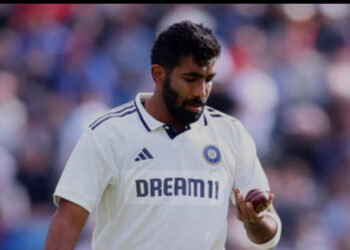There is a lot of noise surrounding the exclusion of a standout performer Priyansh Arya from the Delhi Premier League (DPL) in the Ranji Trophy squad. The player, who smashed six sixes in a DPL match and emerged as the tournament’s highest scorer, is now the focal point of a so-called public frustration. The discontent of some critics and cricket observers stems from the belief that his exclusion is politically motivated, possibly tied to DDCA (Delhi & District Cricket Association) elections. The belief that this being an “election year” sparks;; suspicions that off-field considerations might be influencing selections.
Moreover, it appears that there are groups or individuals aspiring to capitalise on the DPL’s success to gain positions within the DDCA. These armchair critics may lack a deeper understanding of the long-term dynamics at play in Delhi cricket but are using the player’s exclusion as leverage for their own agendas. The DDCA will need to navigate this tricky situation, especially with the growing scrutiny of how it manages talent. If this player’s exclusion is truly based on strategic decisions for the team’s future, the DDCA would benefit from clearly communicating the rationale to avoid any further backlash.
The selectors’ decision regarding Priyansh isn’t necessarily rooted in any bias against him. The reasoning behind his exclusion could be more practical—focusing on his skillset and recent performances. While Priyansh has been a standout in white-ball formats, including his sensational performance in DPL ,his red-ball cricket record may not be as strong, which might explain his absence from the Ranji Trophy squad. This doesn’t imply that he’s being sidelined permanently. His white-ball prowess indicates that he’s likely to be a key part of Delhi’s squad for limited-overs tournaments.
If the selection committee is looking to build a balanced squad specifically for the red-ball format, Priyansh’s omission could simply reflect a strategic decision based on the different demands of red-ball cricket. It’s possible he’ll be back in contention for white-ball competitions, where his aggressive style fits better.
T20 and Test cricket need different approaches and selection decisions should ideally be based on the specific demands of each format. So, what if the national selectors pick the Indian Test team based on IPL performances? Those cricketers who are picked from IPL are actually all format players, who are a rare breed in modern cricket.
Former speedster Javagal Srinath’s observation explains this distinction well—a Test player can often adapt to shorter formats, but excelling in T20 doesn’t necessarily translate into success in the longer format. Cricket has indeed evolved, with T20 players focusing heavily on power-hitting and immediate results. However, red-ball cricket, like the Ranji Trophy, still demands a deeper understanding of the game, requiring patience, technique, and temperament.
For players like Priyansh, who have thrived in white-ball formats, the challenge lies in demonstrating these qualities consistently in the red-ball format. His opportunity in the Ranji Trophy may come, but it’s understandable that selectors prioritize those who have already shown their capability in this arena. Trial matches and performances in the longer format help selectors assess players who possesses the attributes necessary for success in red-ball cricket.
Priyansh’s future in the Ranji Trophy will likely depend on whether he can adapt his game to meet the demands of this format, and given his talent, he could still make his mark when the time comes. For now, those who have shown promise in the trials and past red-ball matches understandably get the nod. This is how it should be and this how it is!
















Thanks for sharing. I read many of your blog posts, cool, your blog is very good.